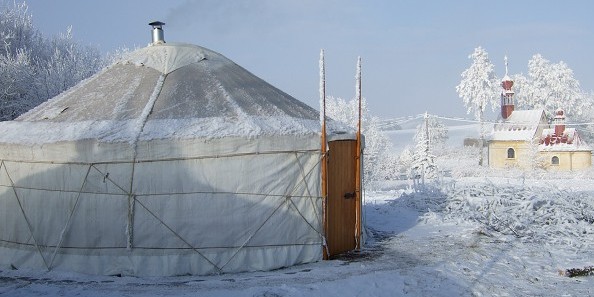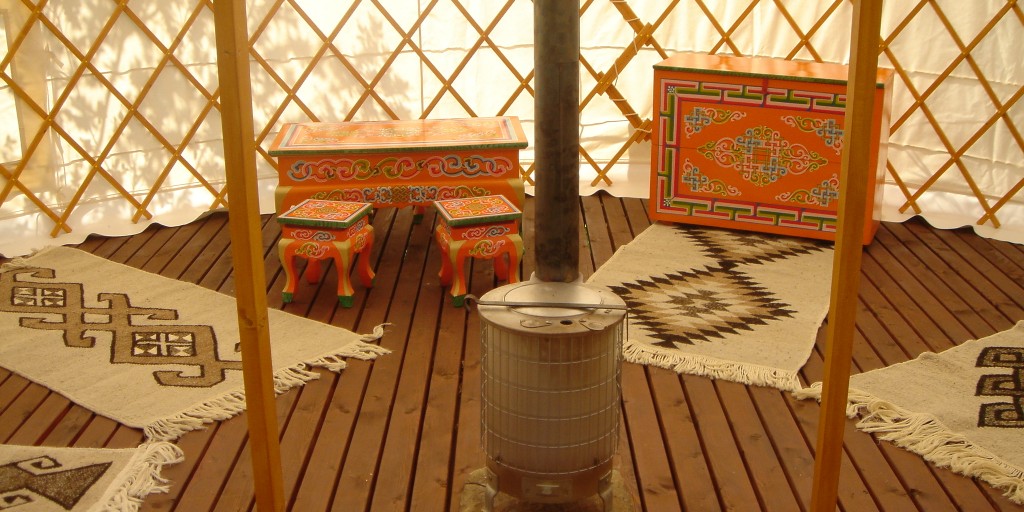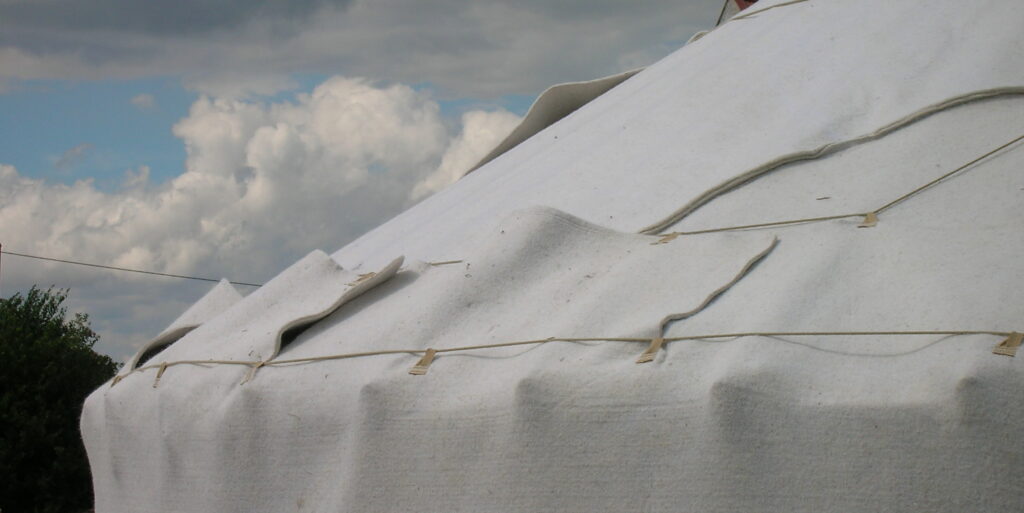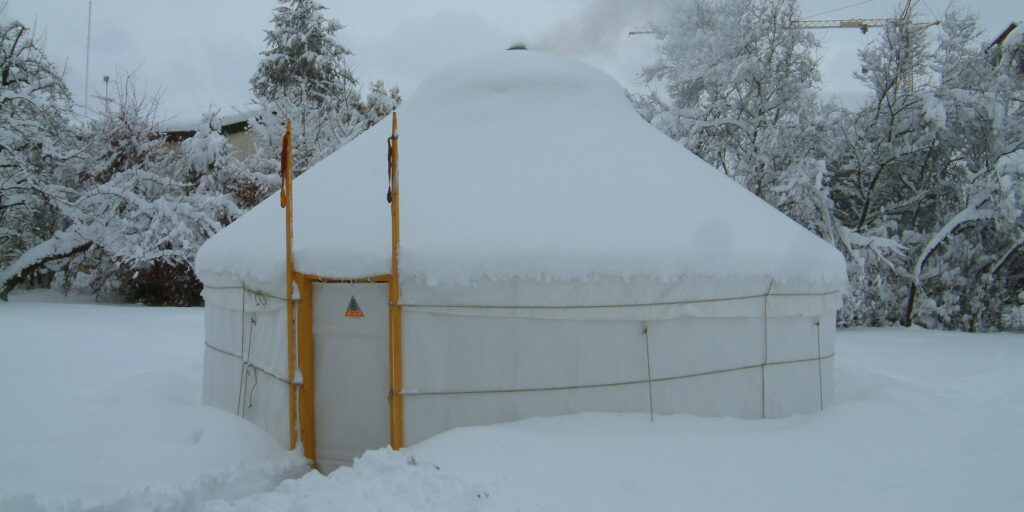WITH A JURTE THROUGH THE WINTER

A protected, warm and dry room is a blessing, especially in the winter months. The yurt offers a cozy space with an indescribably beautiful and festive atmosphere in cold and wet seasons. Whether for Christmas dinner or Advent celebration, theater or storytelling, the yurt is independent of the location and can also be used in many ways in winter.
HEATING

A yurt can be comfortably heated with a wood stove in winter and, next to the tipi, is one of the few tents that can also be inhabited in winter. A smaller yurt is easier to maintain than a large one and you use less wood. The room in a yurt warms up relatively quickly. Just make sure the stove does not overheat and it is better to add smaller amounts of wood on a regular basis rather than a lot at once. In a lively yurt, the temperature does not drop below zero and measures between approx. 14-20 ° C during the day, depending on how intensively the heating is. At night, when the stove doesn't burn, the thermometer can drop to a fresh 5 ° C. An insulation has the advantage that the heat is stored longer in the room. Anyone planning to spend the winter in a yurt should therefore not do without isolation.
THE ISOLATION

Our insulation consists of 3 layers. An inner lining, the fleece and the impregnated outer shell. We recommend an inner garment made of a light cotton fabric that is first placed over the entire construction. The fleece is spread out on top. It is usually a thick wool fleece that completely wraps the whole yurt. The impregnated outer shell is placed over this. If you like, you can also decorate the interior walls with cloths or tapestries. Each additional layer stores the heat in the room. However, it must be ensured that the yurt can continue to breathe and that the moisture exchange is not impaired too much by the insulation. Furniture made of wood can also help to store heat if it is placed against the outside walls.
Anyone who lives in a yurt in winter or who has high demands on their yurt should consider an insulated wooden floor. With a little manual skill, you could also build your own yurt floor. It can be filled with insulation mats, for example, or with felt screws as shown above. The more air that is trapped, the higher the insulation effect. In a lounge, a thick layer of wood chips is sufficient. The schnitzels are evenly distributed on a construction fleece inside the yurt and also isolate quite well.
THE SNOW

Basically, the yurt is a stable tent and can withstand strong winds. However, it is advisable to leave the supports under the crown in winter and use them to support the roof. With large amounts of snow, the fresh snow should be removed from the roof regularly. If the snow stays there too long, the snow thickens due to the temperature differences between day and night and becomes too heavy. The roof could collapse under the weight. A long broom or scraper with a crossbar will help clear the snow. Another option is to throw a plastic tarpaulin over the tent so the snow slides down by itself.
